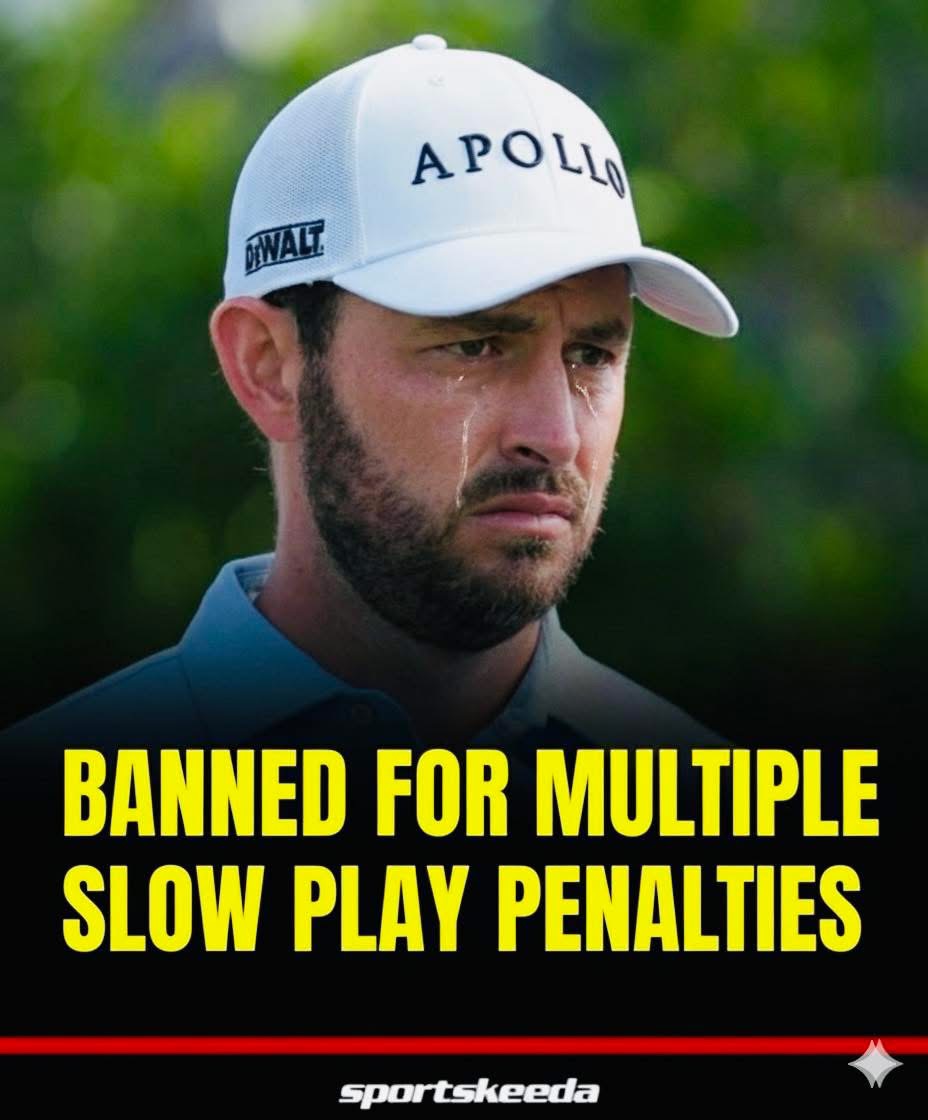The PGA Tour has made an unprecedented move by banning Patrick Cantlay after a string of slow play violations, a decision that has shaken the golfing world and reignited debates about one of the sport’s most controversial topics.
Known for his steady demeanor and methodical approach, Cantlay has long divided opinion among fans and fellow professionals. While his precision and calmness under pressure have delivered multiple PGA Tour victories and a FedExCup title, his pace of play has increasingly overshadowed his success.
Now, after accumulating multiple penalties across several events, Cantlay finds himself on the sidelines in a ruling that could alter both his career and the Tour’s broader approach to discipline.
The Lead-Up to the Ban
Golf’s slow play issue isn’t new, but in recent years, it has become impossible to ignore. Fans, broadcasters, and even players have voiced frustration at lengthy rounds that stretch well beyond expected times.
In response, the PGA Tour introduced stricter pace-of-play rules. Players are monitored more closely, with penalties escalating from warnings to fines, and finally, suspensions. Cantlay’s repeated infractions pushed him beyond that threshold.
“Every player is held to the same expectations,” a Tour spokesperson said in a statement. “Unfortunately, Mr. Cantlay exceeded the allowable limits multiple times. This suspension reflects our commitment to maintaining fairness, consistency, and fan engagement.”
Divided Opinions Across the Golfing World
The ruling has sparked fierce debate.
- Fans’ perspective: Many viewers welcomed the decision, citing Cantlay’s deliberate style as one of the sport’s biggest frustrations. “Golf is hard to watch sometimes,” one fan posted on social media. “This shows the Tour is finally listening.”
- Players’ perspective: Some professionals defended Cantlay, arguing that precision often requires time. “Patrick has his own rhythm,” said one anonymous pro. “Yes, it’s slower than most, but it’s also why he’s successful. A ban feels extreme.”
- Commentators’ perspective: Analysts remain split. Some view the ban as a necessary deterrent to modernize the game and appeal to younger audiences, while others warn that rushing players could diminish quality and tradition.
Cantlay’s Legacy Under Pressure
Patrick Cantlay’s career has been defined by consistency, patience, and an ability to perform under pressure. A FedExCup champion, multiple-time PGA Tour winner, and Ryder Cup competitor, he has firmly established himself among golf’s elite.
Yet, the shadow of slow play has always followed him. Television broadcasts often lingered on his lengthy pre-shot routines, leading to social media backlash and mounting criticism from commentators.
This ban, though temporary, risks leaving a lasting mark on his legacy. Instead of being remembered for his victories, he could be remembered as the player who forced the Tour to draw a line in the sand.
The Bigger Picture: Why This Matters for Golf
The decision represents more than just a disciplinary action against one player. It’s a symbol of the Tour’s new direction.
With competition from LIV Golf, increased demand for shorter and more engaging broadcasts, and a need to appeal to younger fans, the PGA Tour cannot afford to ignore issues that make the sport seem slow or outdated.
By suspending Cantlay, officials have sent a clear message: pace-of-play rules are no longer suggestions—they are obligations.
Still, questions remain:
- Will other slow players face the same treatment?
- Is the Tour enforcing rules equally, or is Cantlay being made an example?
- How will this affect the balance between maintaining tradition and adapting to modern audiences?
What Happens Next?
Cantlay now faces a period of enforced absence from competition. While the ban is temporary, its ripple effects could be permanent.
His options are limited:
- Appeal the ruling — challenging the Tour’s decision in hopes of reducing his suspension.
- Accept responsibility — acknowledging his infractions and vowing to speed up his play upon return.
- Silence and adjustment — quietly refining his process before reentering the Tour with a different approach.
Either way, Cantlay’s return will be closely scrutinized, with every shot timed and every routine measured by fans and officials alike.
Conclusion
Patrick Cantlay’s suspension marks a turning point in professional golf’s ongoing battle with slow play. While controversial, the ban signals the PGA Tour’s determination to modernize, protect its product, and ensure fairness for players and fans.
For Cantlay, the challenge is clear: adapt his game to the new rules—or risk being remembered less for his victories, and more for the controversy that defined him.










